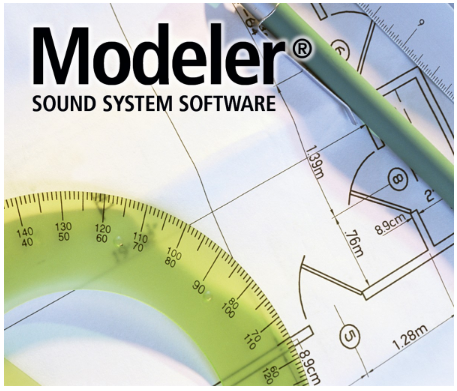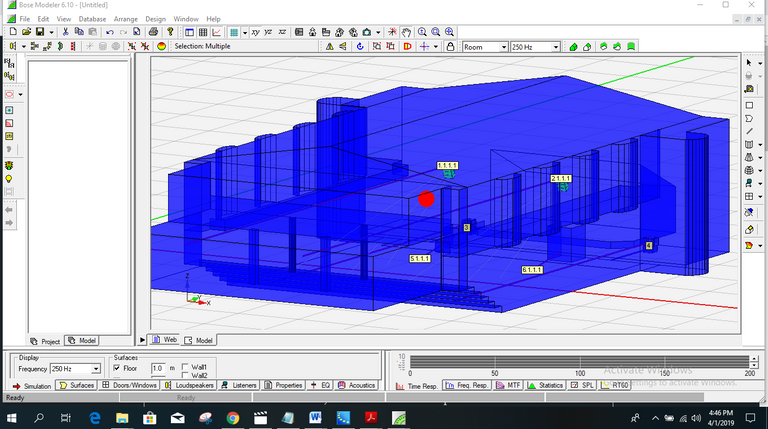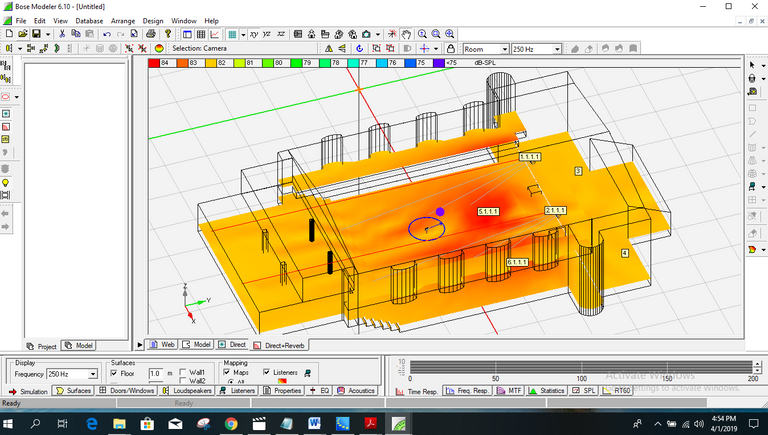When sound collides with a surface, it interacts with and responds to the material and formal conditions of that surface. These interactions, however subtle they maybe, are conveyed to the listener when the sound reflects from the boundaries of our environment and arrives at our ears. All materials reflect or absorb sound in their own particular manner and this constitute to the overall quality of sound we perceive.
I am a system design engineer at Bose Nigeria and just like many others our project designs was facilitated using Bose Modeler® software, which accurately predicts, and documents the performance of virtually any sound system in any environment. It is a 3D modelling program for acoustic design and analysis, which helps system designers and acoustic consultants predict sound system performance in both indoor and outdoor environments.
The software’s advanced algorithms predict acoustic performance of a space, including direct and reflected energy, and Speech Transmission Index (STI), giving designers the ability to iterate quickly using Modeler’s proprietary calculation pipeline, allowing them to try different loudspeaker configurations and placements for optimal coverage, SPL, and intelligibility. For routine projects a designer can rely on accumulated experience to propose the correct system for the project and optimum speaker placement, but in cases where the area of coverage is very large and/or the structure is a complex architectural edifice the chances of accurately deducing the right solution for such a project by just rule of thumb are abysmal, so most times we rely on Modeler or a good predictive acoustic modelling program to help get the best.
For a project, we follow some steps in determining how our proposed system would interact with it environment and how ultimately it would performed when deployed for use;
A. Create a correct room model.
First part of designing a sound system for our project is to create a correct room model. In the room model, we define the materials of each surface to create a correct acoustical simulation and place loudspeakers at optimum positions to provide even coverage over the entire audience area. Sound should be distributed evenly over the entire audience, or listener area. The designer uses the direct (line of sight) sound coverage and adjusts the aiming of the loudspeakers to obtain even coverage across the audience area. To ensure accuracy of room model, designers sometimes measure reverberation time (RT60) of the acoustical space physically and compare with the predicted RT60 to ensure conformity and those adjust parameters to get the model as close to the real situation on ground.
Reverberation Time is defined as the length of time it takes sound to decay 60 dB in a given octave-band, and is a function of room volume, room materials, temperature, and humidity. When we build a room model we apply the type of materials to the different surfaces.
B. Provide the appropriate sound pressure level.
The audience must be able to hear clearly over any ambient noise, and at a level which is appropriate for the type of program being presented. To check this, the designer computes the total sound arriving at all listener areas and this information is represented in decibel per area dbA.
C. Provide the highest possible speech intelligibility to enhance the musical experience.
Everyone should be able to understand speech played over the system. Modeler uses a new world-standard method of predicting speech intelligibility and this values are then compared to a table where the ranges determine the STI index where 10 being the most intelligible and 0 being the worse intelligible.
These are the main cardinal points that guide in our design process to enable us achieve remarkable sound, several other consideration are available at our disposal, the most being sound proofing and treatment to achieve a particular reverberation time. as a general rule of thumb the lower the reverberation time, the better sounding that room would be, and many manufacturers dedicate years of research to finding new and exciting ways and materials for sound proofing. the most note worthy is the use of engineered moss plants as sound absorbers due to their porosity and minimal environmental impact. At this time i believe it is time time to stop the lecture but i hope you where able to learn a lot about our process. The design pictures above are from my house of worship which i took time to design for the purpose of this post and illustration.
Thanks for reading to the end, i am @kboss and it was wonderful having you here.



Hello! I find your post valuable for the wafrica community! Thanks for the great post! We encourage and support quality contents and projects from the West African region.
Do you have a suggestion, concern or want to appear as a guest author on WAfrica, join our discord server and discuss with a member of our curation team.
Don't forget to join us every Sunday by 20:30GMT for our Sunday WAFRO party on our discord channel. Thank you.
Awesome. Thanks guys
CONGRATULATIONS....
Nice Job. 👍 YOUR AWESOME POST WAS SELCECTED IN THE @wafrica DAILY CURATION COURTESY: @julietisrael
thanks alot @julietisrael this just made my day.
thanks for sharing with us.